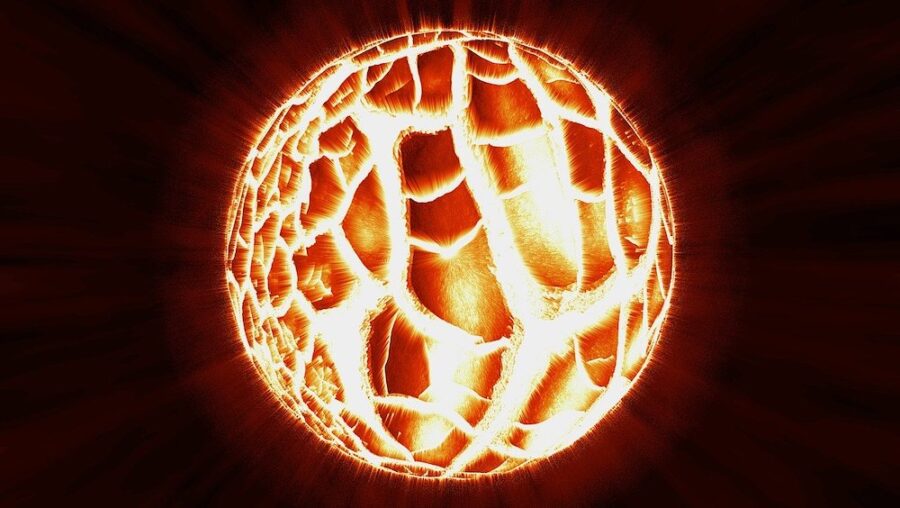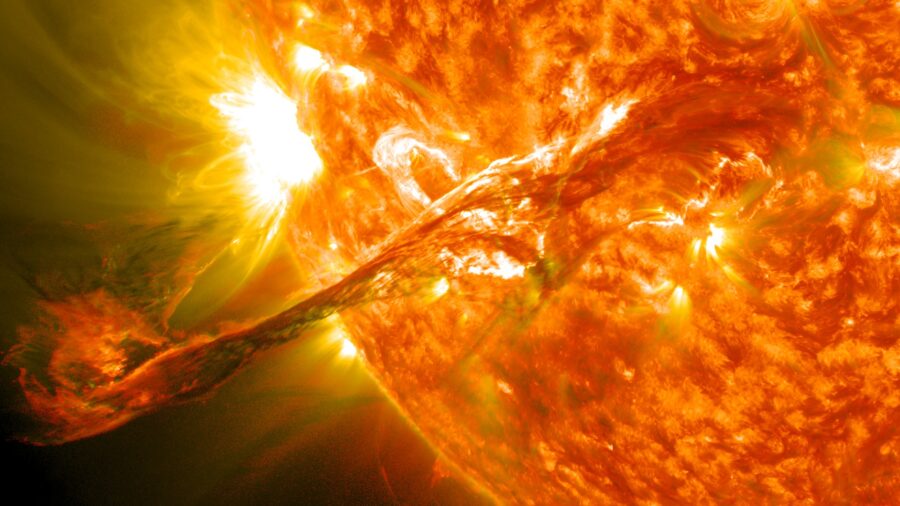The Sun’s Death Revealed By Scientists And It’s Terrifying

Scientists have discovered what the Sun’s death will look like when it reaches the end of its life in approximately 10 billion years. Humanity won’t be around to witness this dramatic event, as our existence on Earth is limited to about 1 billion more years. This is due to the Sun’s gradual increase in brightness, rendering the planet uninhabitable as oceans evaporate and the surface becomes barren.
Red Giant And White Dwarf Phases
The Sun will turn into a red giant approximately 5 billion years before its death, Science Alert reports. During this transformation, its core will shrink while its outer layers expand, engulfing the orbits of nearby planets, including Earth, in the fiery embrace of its expanding atmosphere. The perplexing part is what comes after its red giant phase.
Previous studies had suggested that a bright planetary nebula would require the initial star to be up to twice as large as the Sun. However, the 2018 study used advanced computer modeling and determined that, like approximately 90 percent of other stars, the Sun will probably shrink from a red giant to become a white dwarf before culminating in death as a planetary nebula.
When a star like Earth’s Sun reaches is close to death, it ejects a mass of gas and dust into space, accounting for up to half the star’s mass. As the star’s core exhausts its fuel, it dims and eventually dies. At this stage, the hot core makes the ejected gas and dust shine brightly for a relatively short period (around 10,000 years in astronomical terms), creating the visually striking planetary nebula.
In about 10 billion years, our Sun will die out, turning into a planetary nebula.
Some are so bright that they can be observed from immense distances, measuring tens of millions of light-years. The Sun death research conducted by astrophysicist Albert Zijlstra from the University of Manchester in the UK also predicted the life cycle of various stars and determined the brightness of planetary nebulae associated with stars of different masses.

These typical planetary nebulae include famous examples like the Helix Nebula, the Cat’s Eye Nebula, the Ring Nebula, and the Bubble Nebula. They are named planetary nebulae not because they have any planetary connection but because, when first discovered by William Herschel in the late 18th century, they resembled planets viewed through the telescopes of that era..
“This is a nice result. Not only do we now have a way to measure the presence of stars of ages a few billion years in distant galaxies, which is a range that is remarkably difficult to measure, we even have found out what the Sun will do when it dies.”
University of Manchester astrophysicist Albert Zijlstra
Almost three decades ago, astronomers found that the brightest planetary nebulae in other galaxies exhibited nearly the same brightness level as the Sun before its death. By examining planetary nebulae in other galaxies, astronomers could estimate their distances. However, this data contradicted existing models until the current observation.
Zijlstra’s models successfully resolved this issue by demonstrating that the Sun’s mass is about the lower limit required for a star to produce a visible nebula before its death. Stars with masses less than 1.1 times that of the Sun will not yield visible nebulae. In contrast, stars up to three times more massive than the Sun will generate brighter nebulae.
The predicted brightness closely aligns with observed data for stars falling between these mass limits. “This is a nice result,” Zijlstra explained. “Not only do we now have a way to measure the presence of stars of ages a few billion years in distant galaxies, which is a range that is remarkably difficult to measure, we even have found out what the Sun will do when it dies.”
While the Sun’s death may not be imminent, it is an awe-inspiring reminder of the ever-changing nature of our universe.












